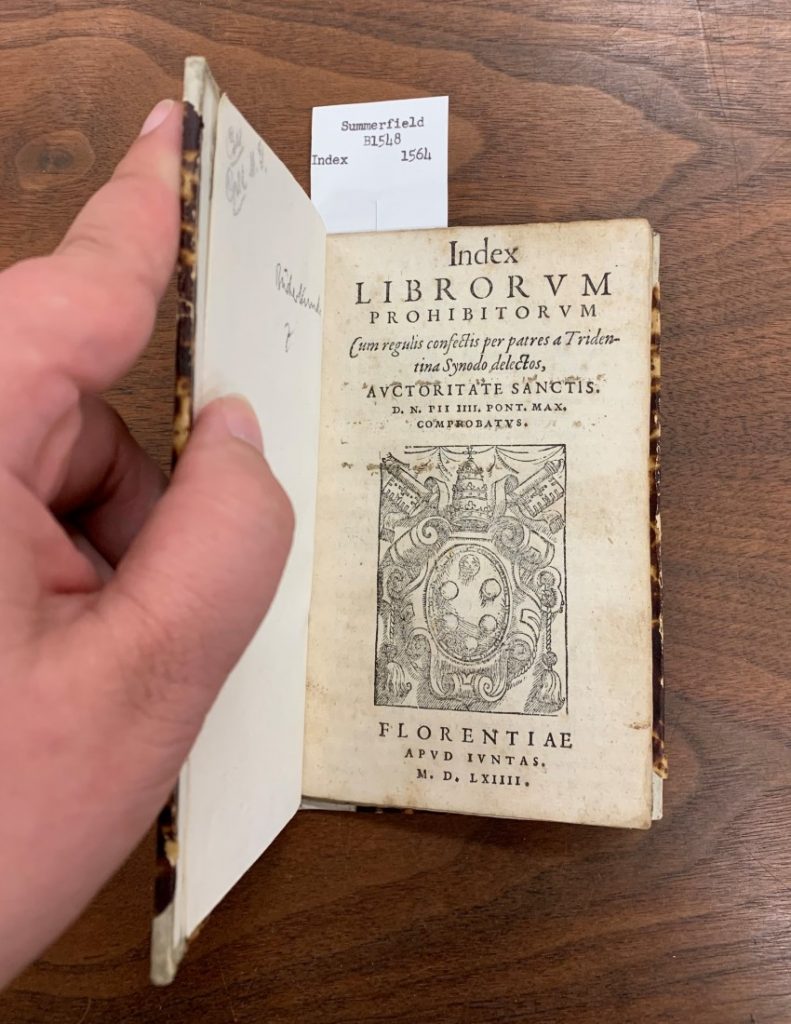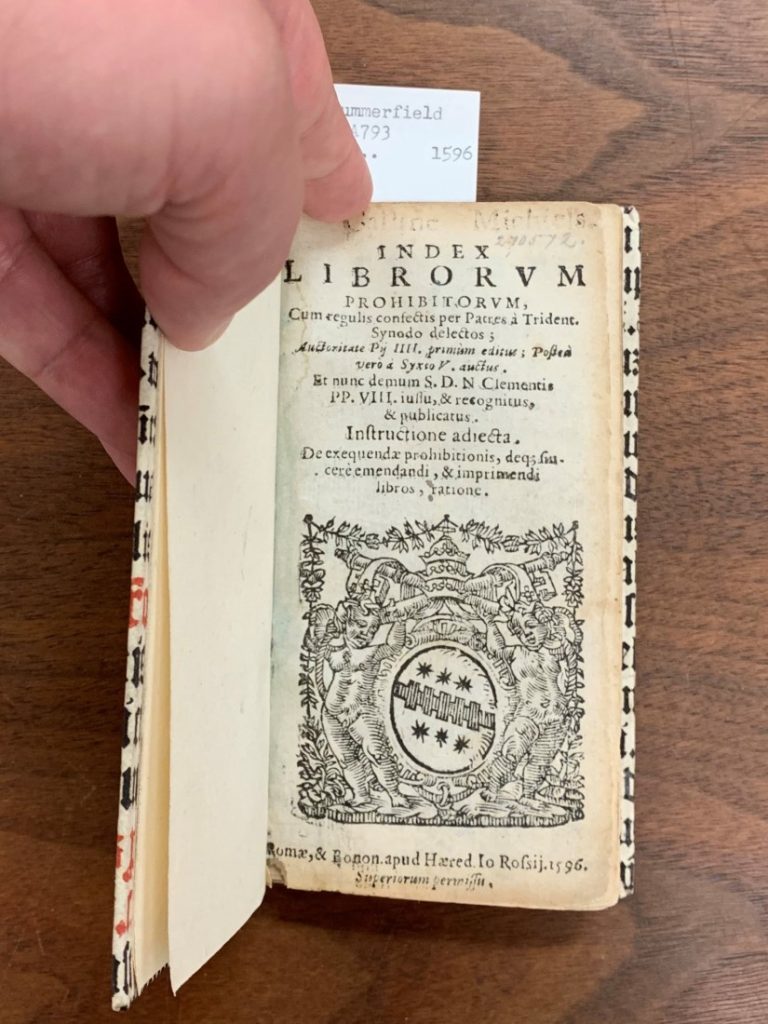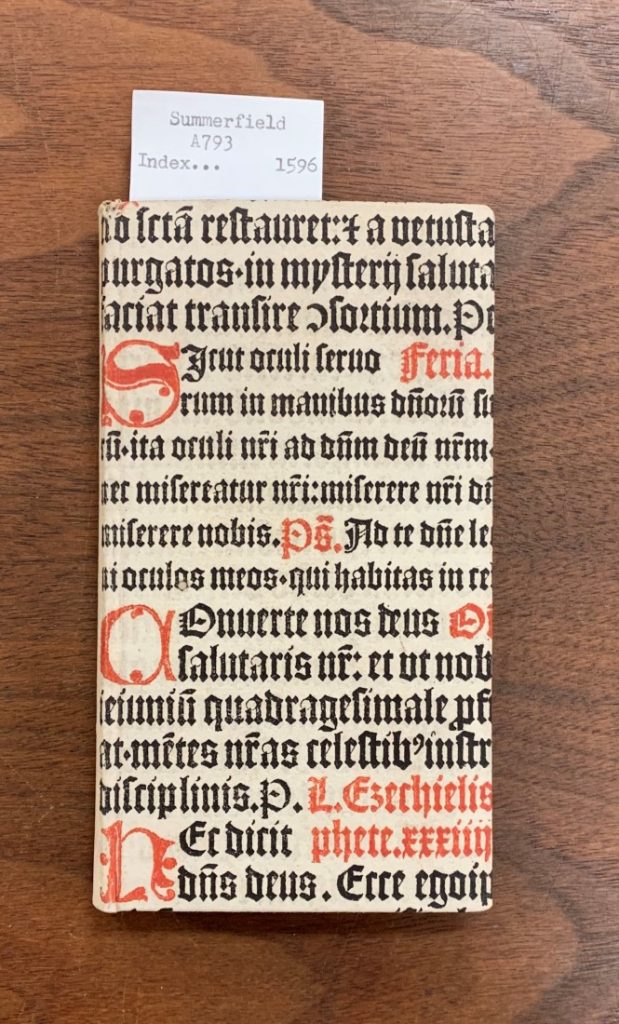Banned Books Week 2020: Index Librorum Prohibitorum
Since the 1980s, librarians and readers have marked the last week in September as Banned Books Week – an effort to bring attention to banned or challenged books, celebrate the freedom to read, and promote discussions about the problem of censorship. While Banned Books Week has only been around since the late 20th century, the attitudes and actions that sparked the week’s inception are far from new. For centuries, people have sought to limit access to materials they deemed problematic.
In honor of Banned Books Week (this year September 27-October 3), I wanted to highlight a centuries-old list of banned books: the Index Librorum Prohibitorum (List of Prohibited Books). The Index Librorum Prohibitorum was a list of banned titles and authors published by the Catholic Church, starting in the 16th century. Here at Spencer Research Library, we have several early editions of the Index Librorum Prohibitorum.


Works included on the list were considered heretical or immoral by the Church with additions and changes continually being added throughout the years. The final edition of the Index Librorum Prohibitorum was published in 1948; Pope Paul VI abolished the list entirely in 1966.
The Index included works by a variety of philosophers, scientists, and authors. Some notable people who appeared on the list (and whose work can be found at Spencer Research Library) include:
- René Descartes
- David Hume
- Jean-Jacques Rousseau
- John Milton
- John Locke
- Voltaire
- Giacomo Casanova
- Simone de Beauvoir
As times and ideas changed, titles and authors could also be removed from the list as they were no longer considered inappropriate by the Church. This was the case for Dante Alighieri, Nicolaus Copernicus, and Victor Hugo – all of whom were included on the list for a time.
Happy reading, everyone!
Emily Beran
Public Services
Tags: banned books week, Catholic Church, Emily Beran, Index Librorum Prohibitorum, List of Prohibited Books, Special Collections, Summerfield Collection


